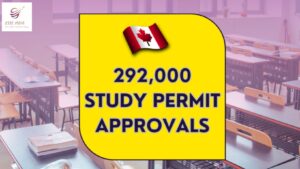
Table of Contents
- Introduction
- Changes in Immigration Application Intake 2.1 Background 2.2 Motivation for Realignment 2.3 Impact on Applicants
- IRCC’s Commitment to Efficiency 3.1 Streamlining Processes 3.2 Technological Advancements 3.3 Enhanced Communication
- Potential Benefits of Realignment 4.1 Reduced Processing Times 4.2 Improved Resource Allocation 4.3 Enhanced Applicant Experience
- Concerns and Considerations 5.1 Possible Challenges 5.2 Mitigation Strategies
- How Applicants Can Stay Informed 6.1 Official Channels 6.2 Online Resources 6.3 Professional Assistance
- Conclusion
Introduction
In recent developments, the Immigration, Refugees and Citizenship Canada (IRCC) has announced its intention to realign the intake of immigration applications. This move has sparked interest and curiosity among applicants, stakeholders, and the general public. This article explores the changes in immigration application intake, IRCC’s commitment to efficiency, potential benefits, concerns, and how applicants can stay informed.
Changes in Immigration Application Intake
2.1 Background
The immigration landscape is dynamic, influenced by various factors such as policy changes, global events, and economic considerations. Recognizing the need for adaptability, IRCC periodically reviews and adjusts its procedures to ensure the immigration system remains effective and responsive.
2.2 Motivation for Realignment
The decision to realign application intake is likely driven by a combination of factors. These may include an increasing volume of applications, the need for improved efficiency, and the desire to enhance the overall immigration experience for applicants.
2.3 Impact on Applicants
Applicants are understandably concerned about how these changes may affect their immigration journey. Understanding the motives behind the realignment and its potential impact is crucial for those navigating the application process.

IRCC’s Commitment to Efficiency
3.1 Streamlining Processes
One of IRCC’s key objectives is to streamline immigration processes. By re-evaluating and optimizing the way applications are received and processed, the aim is to create a more efficient and responsive system.
3.2 Technological Advancements
The integration of advanced technology plays a pivotal role in the realignment process. Automation, data analytics, and digital platforms contribute to faster and more accurate application processing.
3.3 Enhanced Communication
Effective communication is paramount in the immigration process. IRCC is likely to focus on improving communication channels, ensuring that applicants receive timely updates and clear instructions throughout their application journey.
Potential Benefits of Realignment
4.1 Reduced Processing Times
A more efficient intake system could lead to reduced processing times for immigration applications. This, in turn, benefits applicants by providing quicker decisions and allowing them to plan their relocation with greater certainty.
4.2 Improved Resource Allocation
By realigning application intake, IRCC can allocate resources more strategically. This may involve redistributing staff, utilizing technology more effectively, and prioritizing applications based on various factors.
4.3 Enhanced Applicant Experience
A streamlined and efficient application process contributes to an improved overall experience for applicants. Clarity, transparency, and timely communication are essential elements that can positively impact the perception of the immigration journey.
Concerns and Considerations
5.1 Possible Challenges
While the realignment initiative holds promise, there are potential challenges that need to be addressed. These may include initial disruptions, adjustments to new processes, and concerns about the adaptability of both applicants and the immigration system.
5.2 Mitigation Strategies
To address concerns, IRCC is likely to implement mitigation strategies. This may involve comprehensive communication plans, support mechanisms for applicants, and proactive measures to identify and resolve potential challenges as they arise.
How Applicants Can Stay Informed
6.1 Official Channels
Applicants are encouraged to rely on official IRCC channels for information. The official website, newsletters, and updates from authorized representatives are reliable sources for the latest information on changes to the immigration application process.
6.2 Online Resources
Utilizing online resources, such as guides and FAQs provided by IRCC, can enhance applicant understanding. These resources often contain valuable information on application requirements, processing steps, and frequently asked questions.
6.3 Professional Assistance
Seeking assistance from immigration professionals and consultants can provide applicants with personalized guidance. Professionals stay informed about policy changes and can help navigate the complexities of the immigration process.
Conclusion
The announcement of IRCC’s intention to realign application intake reflects the ongoing commitment to improving the immigration process for all stakeholders. While uncertainties and concerns may arise, the potential benefits, including reduced processing times and enhanced applicant experiences, are promising. As applicants adapt to these changes, staying informed through official channels and seeking professional guidance will be key to navigating the evolving landscape of Canadian immigration. IRCC’s efforts to enhance efficiency underscore a dedication to building a robust and responsive immigration system that aligns with the needs of applicants and the broader community.





